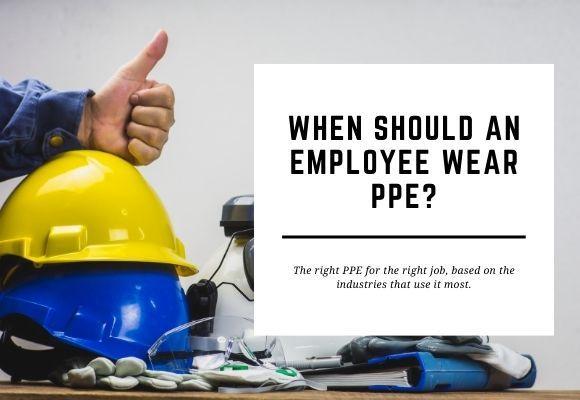
When should an employee wear PPE?
The right PPE for the right job, based on the industries that use it most.
As we come out the other side of a 2-year-long global pandemic, we are all that little bit more conscious of our health and safety. Although PPE – personal protective equipment - has been mandatory in Australia since 1992, it is still sometimes overlooked.
Australia has one of the highest health and safety standards in the world, and it is taken seriously for a reason. PPE saves lives, and it is everyone’s responsibility. Regulations vary between industry and job roles, so we have broken them down to match.
PPE in trade
Within the various trades, PPE requirements also vary. On a construction site, hi-vis jackets and steel toe boots are compulsory for everyone. Other pieces of equipment such as hard hats, gloves, masks, glasses and ear protectors are needed in specific settings.
Electricians are required to wear fire-retardant clothing and face shields and should use Cfl-SI classified fire-resistant matting. Plumbers need respirators and waterproof gloves when working in toxic or harmful settings.
Workshop PPE
While in a workshop, mechanics must avoid wearing loose clothing and jewellery, which could get caught on small parts. They may also need ear protectors, safety glasses and steel-capped boots depending on the work they are undertaking.
Workshops are at a higher risk of slips, trips and falls compared with other workplaces. To mitigate these, facilities managers should remove tripping hazards, keep floors dry and install non slip safety mattingwherever possible.
Horticulture PPE
Horticulture workers need a special range of PPE, due to the variety of plant matter they could be dealing with. Gloves, ear protection and protective goggles are used on most sites, but full protective suits are sometimes needed for poisonous vegetation.
Machinery used in horticulture includes tractors and power tools, so extra steps are needed for these. Harnesses and cut-resistant pants are required for working at heights and using a chainsaw, for example.
PPE in the hospitality industry
Hospitality workers aren’t the first group of employees that you might think of as needing PPE, but it is sometimes necessary. Heatproof gloves should be used to take food in and out of hot ovens, and non slip shoes are important for anyone that will be in the kitchen.
Even chef whites are regarded as PPE, as they prevent burns from hot oil, chemicals and other substances that chefs deal with daily.
PPE for healthcare workers
Since 2019, most of us think of facemasks when we hear the words PPE. Depending on your state’s regulations, we might not need to wear facemasks anymore, but PPE is still important once restrictions are lifted.
If you work in healthcare, you probably have to wear PPE every day at work. Facemasks were invented for surgeons, and nurses wear gloves to prevent contamination. Overalls, visors and respirator masks are now used to protect against COVID too.
PPE FAQs
What is PPE?
PPE stands for personal protective equipment. It is a range of protective equipment used in a range of occupations, including hard hats, safety glasses, earplugs and high visibility clothing.
When should PPE be used in the workplace?
PPE should be used when there is any safety risk that cannot be controlled by another means. This depends on the setting and activity of the day, but generally refers to any time that a personal injury could occur without the PPE.
When is PPE required?
PPE is required for the entire time that the safety hazard is present. For example, workers on a construction site should wear hard hats whenever there are workers or objects overhead.
Who is responsible for PPE?
According to SafeWork Australia, business owners or site managers are responsible for providing PPE, whereas each individual worker is responsible for wearing it correctly:
A person conducting a business or undertaking (PCBU) must put control measures in place to protect workers’ health and safety. That includes giving workers personal protective equipment (PPE), if required to minimise a risk. Workers and other people in the workplace also have responsibilities for PPE.
Who supplies PPE?
According to the quote above, PCBUs are responsible for supplying PPE.
How can I protect my employees?
Give your employees PPE to suit the job they are doing. If they are working at a height, make sure they are in a harness the entire time. If they will be using a chainsaw, make sure they are wearing their ear protection before turning it on.
As well as PPE, you can invest in protection for the entire workforce. Safety matting is a one-off purchase that protects everybody as they pass over it. Depending on your needs, safety mats can protect against fire, accidents and static electricity.
The right floor mats can even keep floors clean without effort, so it is the best way to reduce your workload and increase safety at the same time
As with any type of matting, we can give you a better quote if you get in touch. With the details of your application, our friendly matxperts can recommend the perfect safety solution. Reach out using the chat function or call us on 1300 628 746.

